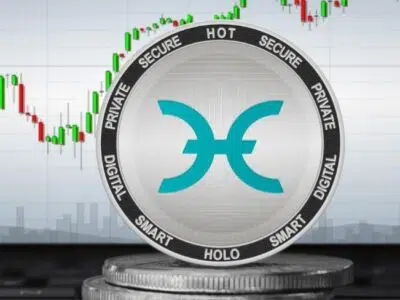The monetary technological segment, i.e. Fintech segment is recognized for its rapid paced and vibrant characteristics. The segment was nearly in emptiness till the latter part of 2016 when the Indian economy was taken by storm post the demonetization period. Ever since it has turned out to be one of the highly talked about sectors in our society due to its broad range along with moderately resourceful everyday solutions.
Each year, this segment is known to preserve its economic frame by way of integrating a number of the highly advanced approaches and it also dynamically transforms itself in the entire course. The year 2018 did not seem to have any major changes when talking about the Fintech segment (otherwise nearly equivalent).
Therefore, we are going to take a quick look at the significant transformations in this year throughout this year. Listed below are five of the main trends that have been observed in the Fintech segment in 2018:
Forbid of Crypto!
An order laid out by RBI in the early part of 2018 regarding the cryptocurrency market turned everything inside out. The RBI has asked all Indian banks to cease all their cryptocurrency dealings with associated firms. Fortunately, this took place just prior to the market volume of cryptocurrency almost bisected and washed around $200 billion in the subsequent two months. Currently, a small number of cryptocurrency participants still seem to be vigorously working in India though not in a good state.
Unconventional Lending:
Digital lending platforms turned out to be fairly exceptional in filling in the credit void inside our nation. But how successful have they been in doing this? MSME loans are well known to have tricky components of lending as a result of the pure dullness that seems to be present inside the segment. This dullness has reduced the share of all scheduled commercial banks in MSME credit which is close to 95% to 90% amid December 2015 and March 2018. The credit expansion became negative after the period of demonetization. Throughout the same phase, the share of loans by NBFCs got almost doubled in value rising with a yearly average of approximately 35 percent; as a result of latest technologies similar to Big Data and Artificial Intelligence.
Banks and Fintech Follow the Same Route:
By means of their unique approach, nationalized Fintech platforms have been known to confirm themselves quite efficient in resolving few of the highest demanding fiscal issues that our nation seem to face. At the moment, as conventional banks have not been able to keep up with the pace in this segment, such Fintech platforms also seem to move their technical proficiency to the Indian banking segment. More than a few conventional Indian banks have recently been teaming up with Fintech platforms and has been at this time controlling their backend solutions. The segments of this association seem to comprise: process automation, customer retention, customer acquisition, loan disbursements, and credit profiling among others.
The steady succession of Mobile Wallets:
Mobile wallets, in their highly simple type, have been able to put in partial value to an individual-especially when compared with further payment options like that of UPI and AePS among others turning extra popular. In order to stay significant to consumers, the move towards integrating more every day and consumer-oriented uses have been noticed among mobile wallets.
Upward-looking Governmental Guidelines and Regulations:
At the time of the Union Budget 2018, Arun Jaitley (Finance Minister) declared the government’s intention of surveying the Blockchain technology as a tool to amplify digitization. Constant efforts have been put down by the government on the IndiaChain, which is by far going to be the most significant community blockchain system in the entire world. By means of IndiaChain, the country predicts to reduce scams, capitalize on transparency and speed up agreement enforcement.
The up-coming circulated ledger plan will help the Indian Fintech contestants in two main methods, i.e., accelerating fiscal services like that of cross-border payments and totally protecting the business records. It is also going to aid Fintech contestants to deal with the rising risks of cyber-security.
Additional regulatory alteration comprises API integration, eKYC, India Stack, e-NACH beside others. The RBI has to be hopeful concerning the Fintech segment and is structuring the approach for additional technology-driven transformations.
This has been a scenario of Fintech trends this year. The segment is seen to grow by means of a CAGR (Compound Annual Growth Rate) of 22 percent otherwise almost three-times the GDP expansion rate of the nation. It, however, can be argued that the Indian Fintech segment is still way behind from its exact potential. In the midst of ever-growing digitization, the prospect is still positive for the Indian Fintech segment. However, some time is needed to observe the possible transformations in our lives by the side of it.









